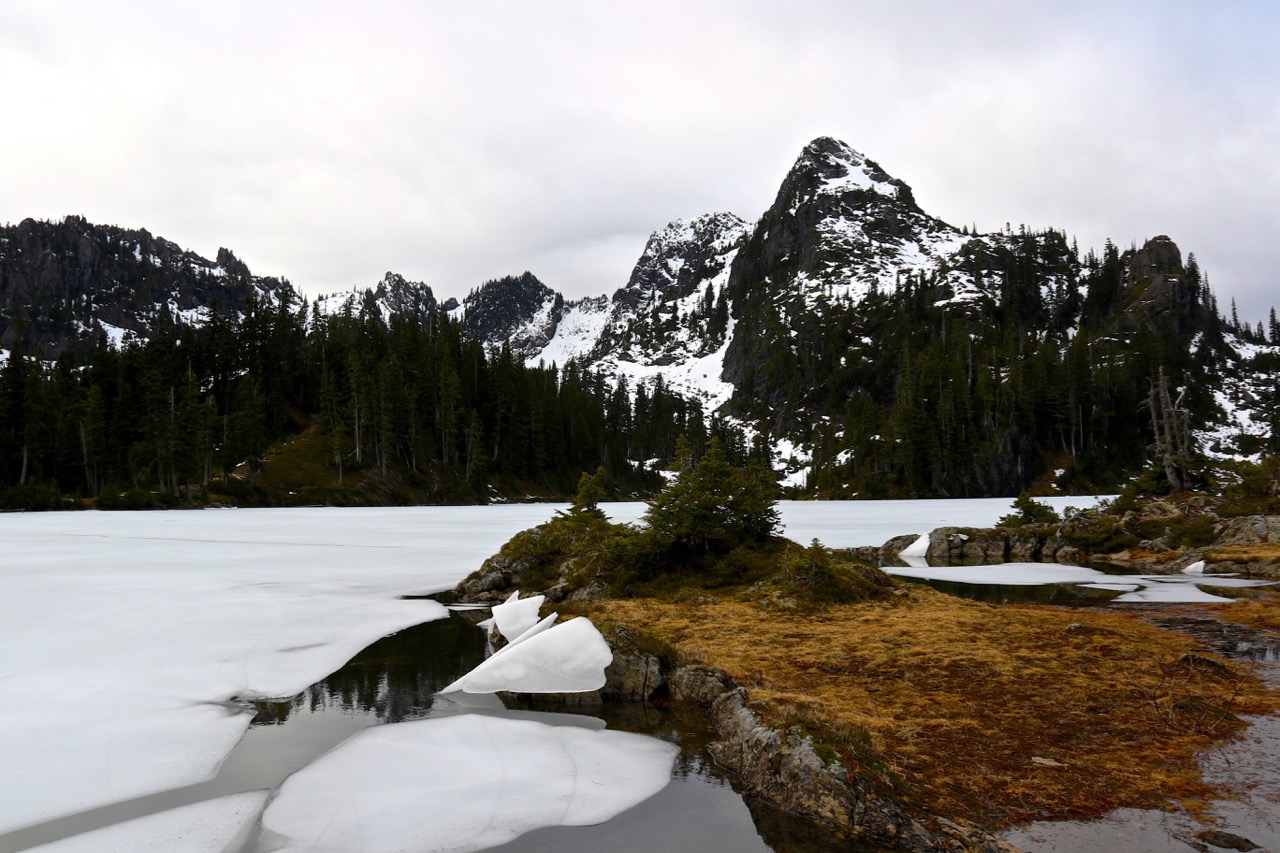Back in October of 2015, the endless summer of warm temperatures and sunny days suddenly vanished, replaced by endless, record setting rainfall and a ridiculously healthy snowpack in the Cascade and Olympic Mountains. Skiers and snowboarders rejoiced as their mountains became white and fluffy, while hikers slogged along on muddy, soaked trails. Numerous roads around the state were washed away, trees fell in cities and trails, and the entire Pacific Northwest experienced one of the nastiest winters on record. We were told that it was good and that the snowpack in the mountains would last well into summer. We were reassured that we had recovered from the historic drought of 2015 and that last winter was our savior.
It seemed that many of the cable media news forecasters thought they were correct and that the snowpack would last a long time. Those of us watching the weather stations around the state’s mountains, knew better. As we monitored the snowpack each week, we were seeing something different.
As the sunny skies returned in April of 2016 and record warmth once again blanketed Cascadia, the snow was melting faster than normal. Actually, it was melting faster it had ever melted since it was being recorded. According to a press release by the USDA, the record high temperatures in April of 2016 set records for snowmelt rates around the region:
April experienced record high temperatures throughout the entire Pacific Northwest, causing much of the remaining snowpack to melt and runoff. Over 80 percent of all SNOTEL sites with at least 15 years of data set all new melt rate records for April. During two separate high-pressure weather systems in April, Snowpack Telemetry (SNOTEL) experienced minimum daily temperatures exceeding 20 degrees above normal. Due to the rapid snowmelt, runoff was above normal and Washington State’s rivers and streams were able to contain it without flooding.

While many will say that this is just a fluke and that cooler temperature will return, the latest National Weather Service’s short-term forecasts are calling for warmer than normal forecasts with a few chances of precipitation. The long-range forecasts for the early summer continue to be warmer than average with a normal to slightly less than normal rainfall. You can see the full reports here.
The United States Department of Agriculture Report continues:
The May 1 statewide SNOTEL readings were 87 percent of normal. The Tolt River Basin reported the lowest readings at 44 percent of the 30-year median among those with remaining snow. Potato Hill SNOTEL near Mt. Adams had the highest percent age with 121 percent. Most basins reported considerable decreases from last month. Most areas reached peak snowpack by April 1 or before which is 2-3 weeks early. Westside medians from SNOTEL, and May 1 snow surveys, included the North Puget Sound river basins with 83 percent of normal, the Central and South Puget river basins with 60 percent and 78 percent respectively, and the Lower Columbia basins with 93 percent of normal. Snowpack along the east slopes of the Cascade Mountains included the Yakima area with 72 percent and the Wenatchee area with 74 percent. Snowpack in the Spokane River Basin was mostly melted out and the Walla Walla River Basin had 76 percent remaining.
Those numbers were on May 1st. Eight days later, things have melted even faster. (see map above)
If the long range forecasts hold and the warmth is here to stay, we will once again be in trouble as we hit the months of July and August. The snowpack in the Cascades is currently 63% of normal, while the Olympic Mountains are 80% and melting fast. The Olympic Mountains snowpack was 91% of normal on Thursday, May 5th. That is an 11% melt off compared to normal in just four days. Four days…
The numbers don’t lie, our snowpack could easily be gone by the end of June and we could be facing yet another serious fire danger year. We are not trying to be all gloom and doom, but these are the facts.
Stay posted to The Outdoor Society for snowpack conditions year round.



